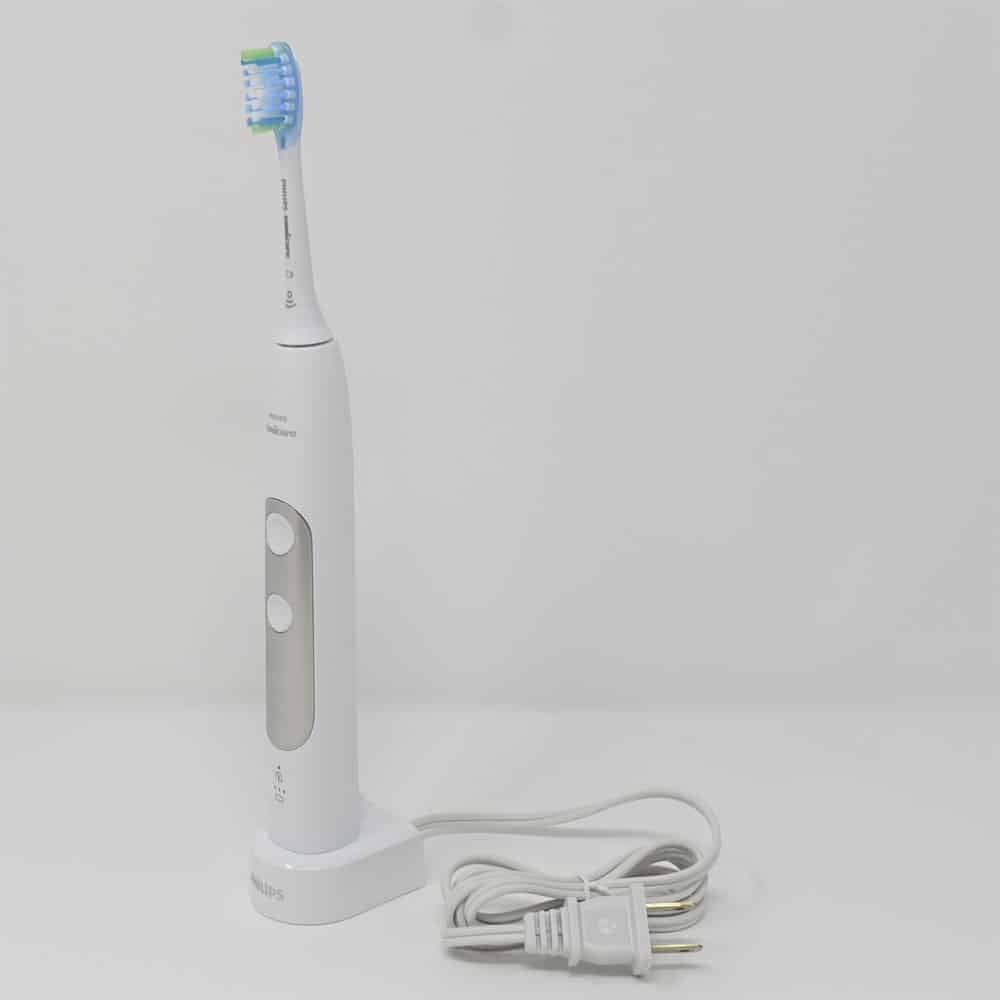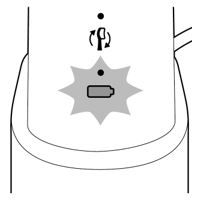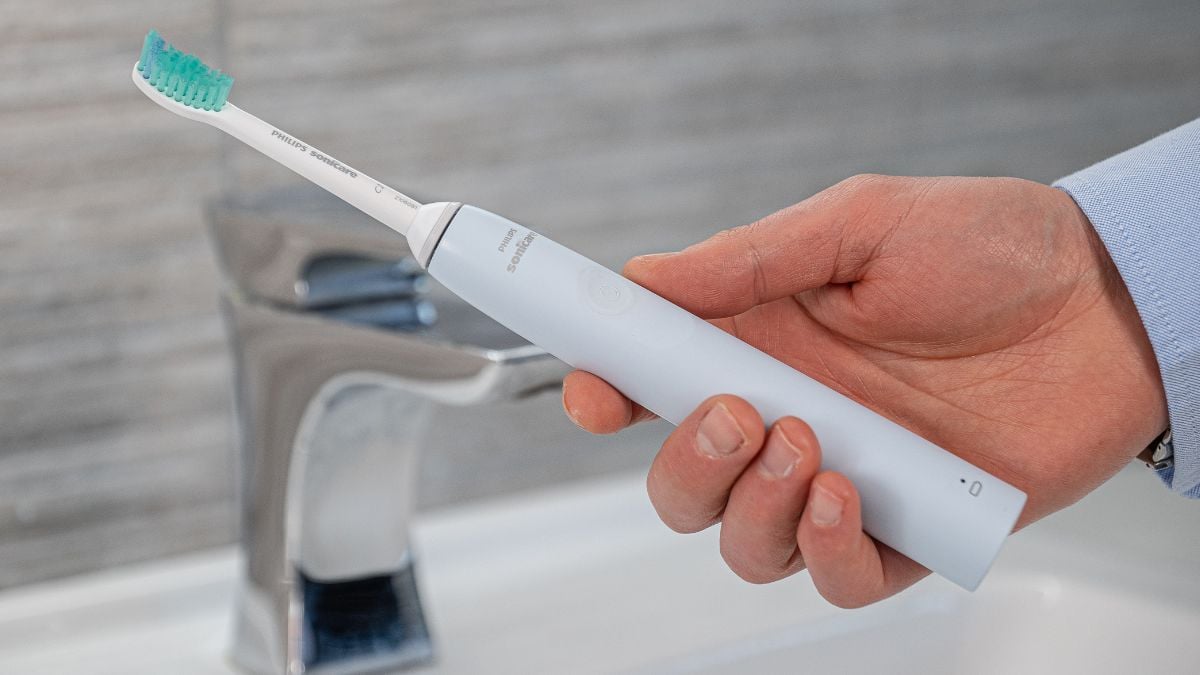When your Sonicare toothbrush beeps, it usually indicates something specific. These beeps can mean different things, depending on the situation.
Understanding these signals can help you maintain your toothbrush better. Sonicare toothbrushes are known for their smart features. The beeping sound is part of these advanced functionalities. It might be a reminder to replace the brush head. Or it could signal low battery.
Sometimes, it indicates the end of a brushing cycle. By knowing what each beep means, you can ensure your toothbrush works effectively. In this blog, we will explore the various reasons why your Sonicare toothbrush beeps. This will help you address the issue promptly and keep your oral hygiene in check.

Credit: www.electricteeth.com
Common Sonicare Toothbrush Alerts
Many users of Sonicare toothbrushes may hear various beeps during usage. These beeps are alerts that provide important information about the toothbrush’s status. Understanding these alerts helps in maintaining the toothbrush and ensuring optimal performance. Below are common Sonicare toothbrush alerts and their meanings.
Battery Low
A frequent alert is the low battery beep. This beep indicates that the toothbrush needs charging soon. Typically, the beep sounds along with a flashing light on the handle. To avoid unexpected power loss, it’s good practice to charge the toothbrush at this point.
Brush Head Replacement
Another important alert is the brush head replacement beep. Sonicare toothbrushes track the usage of the brush head. After a certain amount of time, the toothbrush beeps to signal that it’s time to replace the brush head. Replacing the brush head ensures effective cleaning and maintains oral hygiene.
Battery Alerts
Your Sonicare toothbrush beeps to communicate important information. One crucial aspect is battery alerts. Understanding these beeps helps maintain your brush’s performance. Below, we explore what each beep means.
Low Battery Beeps
Low battery beeps indicate your toothbrush needs charging. The beeps usually sound after brushing. They remind you to recharge soon. Ignoring these alerts can lead to a dead battery. Regular recharging ensures your toothbrush always works. Pay attention to these beeps to avoid disruptions.
Charging Indications
When charging, your Sonicare toothbrush also beeps. These beeps confirm the connection to the charger. They signal that charging has started. The beeps might repeat during charging. This assures you that the process is ongoing. Once fully charged, some models may beep again. This final beep indicates a full battery. Keep your toothbrush on charge until you hear it. This practice maintains optimal performance.
Brush Head Alerts
Sonicare toothbrushes are smart devices designed to help maintain optimal oral hygiene. One of their key features is the brush head alerts. These alerts let you know when you need to replace or adjust your brush head. Understanding these alerts ensures your toothbrush is always in top condition.
Replacement Reminder
Your Sonicare toothbrush keeps track of your brush head usage. It will beep when it’s time for a replacement. This is a reminder to change the brush head. Using an old brush head can reduce cleaning effectiveness. The bristles wear out and become less efficient.
To keep your teeth clean, replace the brush head every three months. Some models have a brush head replacement indicator to make this easier. Regular replacement ensures the best performance and oral health.
Proper Installation
Beeping can also indicate improper brush head installation. Ensure the brush head is securely attached to the handle. If it’s loose, it may not work correctly. Follow these steps to install the brush head properly:
- Align the brush head with the handle.
- Push the brush head down until it clicks.
- Check for a snug fit.
If the beeping continues, try re-installing the brush head. A correctly installed brush head improves brushing efficiency.

Credit: www.philips.sa
Pressure Sensor Alerts
Your Sonicare toothbrush is designed to help you brush effectively. One of its smart features is the pressure sensor alert. This alert helps you maintain the right pressure while brushing. If your toothbrush beeps, it may be warning you about excessive pressure.
Excessive Pressure Warning
Applying too much pressure while brushing can harm your gums and enamel. The pressure sensor alert activates when you press too hard. A beep will sound, signaling you to ease up. This feature protects your teeth and ensures a gentle cleaning experience. Paying attention to these alerts can save your smile.
Proper Brushing Technique
Brushing your teeth correctly is important for oral health. Hold your Sonicare toothbrush at a 45-degree angle to your gums. Use gentle, circular motions. Do not scrub back and forth. Let the toothbrush do the work. The pressure sensor alert will guide you if you press too hard. Follow these steps for a healthier mouth.
Mode Change Beeps
Your Sonicare toothbrush beeps to indicate a mode change. These beeps help you know when the brush has switched to a different cleaning mode. Understanding these beeps ensures you use the correct mode for your oral care.
Switching Modes
Each Sonicare model has multiple modes. These modes cater to different cleaning needs. When you switch modes, the toothbrush makes a beep sound. This beep confirms the mode change.
To switch modes, press the mode button on your Sonicare toothbrush. You will hear a beep indicating the toothbrush is now in a new mode.
| Mode | Purpose |
|---|---|
| Clean | Daily cleaning |
| White | Stain removal |
| Gum Care | Gum health |
Mode Indicators
Your Sonicare toothbrush uses indicators to show active modes. These indicators are visual and audible. The beep sound is an audible indicator.
Some models have lights to show the current mode. This visual indicator works with the beep sound. Together, they ensure you know the active mode.
- Check for lights on the handle
- Listen for the beep sound
- Confirm the mode before brushing
Timer Alerts
Understanding the timer alerts on your Sonicare toothbrush can enhance your brushing experience. These alerts help you brush for the right amount of time, ensuring every part of your mouth gets proper attention. Let’s break down the two main types of timer alerts: Quadpacer Beeps and Smartimer Completion.
Quadpacer Beeps
The Quadpacer feature divides your mouth into four sections. Every 30 seconds, your Sonicare toothbrush will beep, signaling you to move to the next section. This ensures each area gets equal cleaning time.
Here is a simple breakdown:
- First beep: Time to move to the upper right side.
- Second beep: Switch to the lower right side.
- Third beep: Move to the upper left side.
- Fourth beep: Finally, brush the lower left side.
Following these beeps helps in getting a thorough clean.
Smartimer Completion
The Smartimer feature ensures you brush for at least two minutes. After two minutes, your toothbrush will beep and then turn off. This indicates you have completed the recommended brushing time.
This feature is crucial because dentists recommend brushing for a full two minutes. It helps remove more plaque and keeps your mouth healthy.
Using the Smartimer guarantees you meet the dentist-recommended brushing duration every time.
Troubleshooting Alerts
Your Sonicare toothbrush beeps for various reasons. Understanding these troubleshooting alerts helps maintain your toothbrush. Addressing the issues promptly ensures optimal performance. Let’s explore common alerts and their meanings.
Error Messages
If your Sonicare toothbrush beeps, it may indicate an error. Error messages are your toothbrush’s way of communicating. Here are common error alerts:
- Low Battery: Beeping may signal a need to charge.
- Brush Head Replacement: Beeping can remind you to replace the brush head.
- Blocked Motor: A beep might mean something is obstructing the motor.
Address these issues to ensure your toothbrush functions correctly.
Resetting The Toothbrush
Sometimes, beeping requires resetting your toothbrush. Here’s how to reset:
- Place your toothbrush on the charger.
- Press and hold the power button for 10 seconds.
- Release the button once you see the light flash.
This simple process can resolve many issues. Resetting should stop the beeping and restore normal function.
By understanding these troubleshooting alerts, you can keep your Sonicare toothbrush in top condition.
Maintenance Tips
Maintaining your Sonicare toothbrush ensures it functions properly and lasts longer. Regular care can prevent issues like unexpected beeps and extend its lifespan. Follow these maintenance tips to keep your toothbrush in top shape.
Regular Cleaning
Regular cleaning is crucial for your Sonicare toothbrush.
- Rinse the brush head thoroughly after each use.
- Remove the brush head and rinse the base to remove toothpaste residue.
- Wipe the handle with a damp cloth to keep it clean.
- Deep clean the brush head weekly by soaking it in mouthwash or a mixture of water and vinegar.
Proper Storage
Proper storage prevents bacterial growth and maintains the brush’s effectiveness.
- Store the toothbrush upright to allow it to air dry.
- Use a ventilated holder to keep the brush head dry and clean.
- Avoid placing the toothbrush in a closed container while still wet.
- Keep the toothbrush away from the toilet and other high-germ areas.
| Maintenance Tip | Frequency |
|---|---|
| Rinse brush head | After each use |
| Deep clean brush head | Weekly |
| Store upright | Always |
| Wipe handle | After each use |

Credit: www.electricteeth.com
Frequently Asked Questions
Why Does My Sonicare Toothbrush Beep?
Your Sonicare toothbrush beeps to indicate low battery, signal charging, or remind you to change brushing areas.
What Should I Do If My Sonicare Beeps?
Check the battery level and charge it if needed. Ensure the toothbrush is properly connected to the charger.
How Often Should My Sonicare Beep?
It beeps every 30 seconds to remind you to switch brushing areas and once at the end of the cycle.
Can I Stop The Beeping Sound?
No, the beeping is a built-in feature to help you brush effectively. It ensures proper oral hygiene.
Is A Beeping Sonicare Toothbrush Defective?
No, it is not defective. Beeping is normal and part of its smart features. It helps guide your brushing.
Conclusion
Your Sonicare toothbrush beeps to signal important functions. These beeps help maintain optimal brushing habits. Understanding these signals ensures your toothbrush works efficiently. Regular maintenance also extends its life. If beeping continues, refer to the manual. Troubleshooting tips can solve many issues.
Proper care keeps your toothbrush in top condition. Happy brushing!
